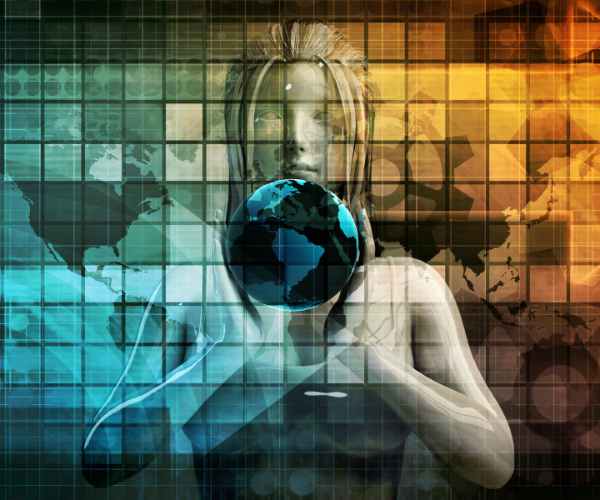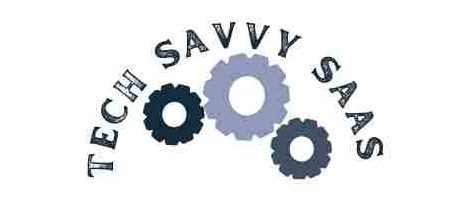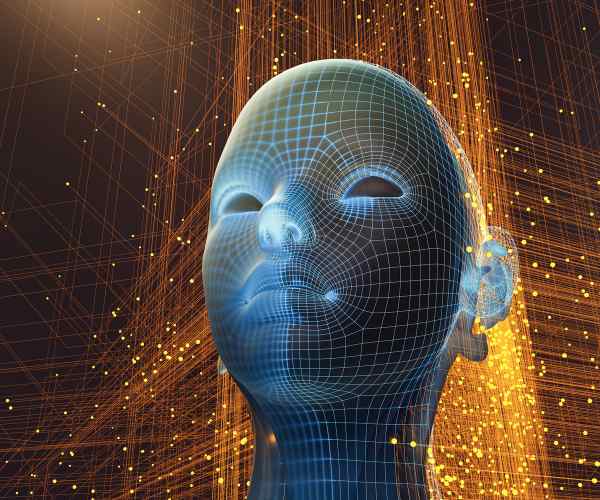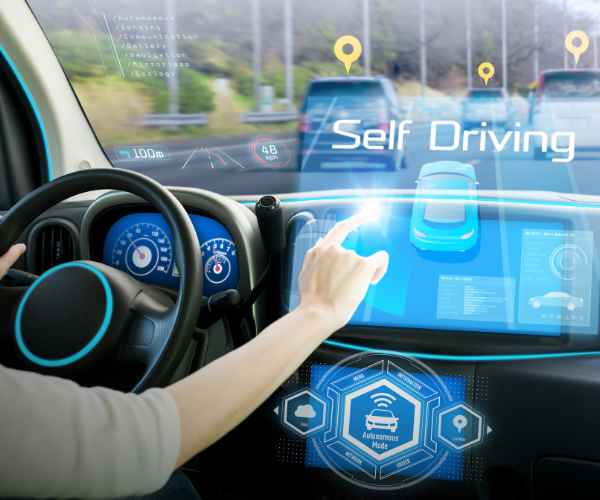The term “Digital Renaissance” encapsulates a transformative era where art and technology converge, fundamentally reshaping our societal, cultural, and economic landscapes. This phase marks a significant period in the 21st century, characterized by rapid advancements in digital technologies that have revolutionized the way we create, communicate, and consume.
Throughout history, renaissances have been times of profound change and radical innovation. Today’s digital version is no different; it’s a period marked by the technological revolution that influences multiple domains—from art and media to the broader digital economy. The integration of digital technologies in creative processes has not only transformed traditional arts but has also given rise to new forms of digital art and methods of production.
As we delve deeper into this era, it’s crucial to understand the vast implications of these technological advancements. They have spurred a paradigm shift in various sectors, introducing new challenges and opportunities. This narrative will explore how the Digital Renaissance is not just redefining existing frameworks but also setting the stage for future innovations.

What is the Impact of the Internet and Connectivity in the Digital Age?
- What is the Impact of the Internet and Connectivity in the Digital Age?
- How Has Artificial Intelligence Transformed the Creative Industries and Digital Art?
- What Role Does Cloud Computing Play in Data Management and Business Transformation?
- How Are IoT and AI Merging to Create Interconnected Virtual Environments and Virtual Worlds?
- What Are the Cybersecurity Challenges in Protecting the Digital Realm?
- How Do Ethical and Societal Considerations Impact Technological Innovation?
- What Emerging Technologies Should We Watch That Could Redefine the Digital Landscape?
- How Are Governments Balancing Innovation with Regulation in the Digital Revolution?
- Key Takeaways: Understanding the Transformative Power of the Digital Renaissance
- Conclusion
The Internet has undergone a remarkable evolution since its inception. Initially designed to connect a small number of computers, it has become the ubiquitous infrastructure that supports a global network of billions of devices. The Internet’s role in the digital age is so pivotal that it’s often termed the “Electronic Superhighway,” a concept first visualized by media artist Nam June Paik in 1974, illustrating its potential to transform communication.
Global Communication and Data Exchange
In today’s digital landscape, the Internet serves as the backbone for global communication and data exchange. According to a report by the International Telecommunication Union (ITU), internet penetration has soared from about 6.5% of the global population in 2000 to over 62% in 2020. This exponential growth has democratized information access, making it one of the most powerful tools for global connectivity and education.
Transformation of Work and Content Creation
The Internet has radically changed the workplace. The rise of broadband and mobile internet has enabled a shift towards telecommuting and remote work, a trend that has accelerated due to the COVID-19 pandemic. According to a study from Stanford University, approximately 42% of the U.S. labor force was working from home full-time as of June 2020. This shift has not only changed where we work but also how work is done, increasing reliance on digital communication tools and platforms.
In terms of content creation, the Internet has been equally transformative. Platforms like YouTube, Instagram, and TikTok have allowed millions of users to become content creators, engaging with audiences in entirely new ways. For example, YouTube reports that over 500 hours of video are uploaded every minute, showcasing the platform’s significant role in the digital content ecosystem.
How Has Artificial Intelligence Transformed the Creative Industries and Digital Art?
Artificial Intelligence (AI) has significantly altered the landscape of many industries, with its integration into everyday technologies becoming increasingly commonplace. In the realm of creative industries and digital art, AI has not only automated processes but also fostered new forms of creativity, fundamentally changing the art production landscape.
Influence on Music Composition and Visual Arts
AI’s role in transforming music composition and visual arts is particularly notable. Advanced algorithms can now analyze vast amounts of data to generate music or create complex visual artworks that were once the sole domain of human artists. For instance, projects like Google’s Magenta, an AI that uses machine learning to create new sounds and images, have shown that these technologies can enhance creative processes by providing tools that allow artists to explore new realms of creativity.
Examples in Music and Visual Arts
- Music: AI systems like AIVA (Artificial Intelligence Virtual Artist) have been used to compose music for films, commercials, and games. AIVA analyzes thousands of scores of classical music to learn music theories and apply them to create original compositions.
- Visual Arts: Tools like DeepArt, which utilizes a neural network to turn photographs into digital paintings in the styles of famous artists like Van Gogh or Picasso, demonstrate how AI is being used to revolutionize artistic expression.
Data Points and Research
According to a study by MIT, AI in the arts can significantly reduce the time spent on creating art by up to 30% while also helping artists experiment with an infinite number of styles and techniques without the traditional physical constraints. This integration of AI is not just transforming existing practices but also paving the way for new forms of art that were previously unimaginable.
What Role Does Cloud Computing Play in Data Management and Business Transformation?
The shift towards cloud computing represents a fundamental change in how businesses manage data and operate. Cloud computing provides scalable computing resources, thereby supporting the digital transformation of businesses across various sectors.
Enhancement of User Experience and Innovation
A prime example of how cloud computing is leveraged to enhance user experience and drive innovation can be seen in how companies like Google utilize these technologies. Google Cloud Platform offers a suite of cloud computing services that power applications like Google Search and YouTube. The ability to scale on demand and manage large datasets efficiently allows these services to deliver seamless user experiences to billions of users worldwide.
Examples in Business Applications
- Data Management: Companies like Netflix use cloud computing to manage their immense data needs. By using Amazon Web Services (AWS), Netflix can stream high-quality video content to millions of users around the world without physical or geographical limitations.
- Innovation: Small startups and large enterprises are using cloud environments to test and deploy new applications quickly without the need for significant upfront capital investment in hardware. This has democratized the ability to innovate, making advanced computational resources accessible to a broader range of developers.
Data Points and Statistics
- According to a report by Gartner, the worldwide public cloud service market is projected to grow to $331 billion by 2022, up from $182.4 billion in 2018.
- Research from IDC indicates that by 2021, 90% of new enterprise apps will use cloud-native technologies, demonstrating the critical role cloud computing plays in modern digital strategies.
How Are IoT and AI Merging to Create Interconnected Virtual Environments and Virtual Worlds?
The technological landscape is rapidly evolving, particularly with the convergence of technologies like the Internet of Things (IoT) and Artificial Intelligence (AI). These technologies are not only advancing in their respective fields but are also combining to create sophisticated, interconnected systems that facilitate the creation of virtual environments and virtual worlds.
Enhancing Real-World Functionality and Convenience
One of the most tangible examples of this convergence is seen in the development of smart homes. These homes utilize a network of devices connected through the IoT, controlled and optimized using AI, to enhance everyday activities and increase energy efficiency.
Examples of Technology Integration in Smart Homes
- Energy Management: Smart thermostats like Google Nest learn the homeowner’s behavior and adjust heating and cooling systems to optimize energy usage, reportedly saving an average of 10–12% on heating bills and about 15% on cooling bills.
- Security Systems: AI-enhanced security cameras and IoT sensors can identify unusual activities and provide real-time alerts to homeowners and law enforcement, significantly improving home security.
Statistics and Data Points
- A report by Statista estimates that by 2025, there will be over 75 billion IoT-connected devices worldwide, enabling more extensive and complex smart home ecosystems.
- According to a survey by Gartner, 47% of organizations plan to increase their investments in IoT despite the economic impact of the COVID-19 pandemic.
What Are the Cybersecurity Challenges in Protecting the Digital Realm?
As digital technologies pervade every aspect of our lives, the importance of cybersecurity has never been more critical. Cybersecurity is essential for protecting data and systems from emerging threats that accompany the increasing digitization of information.
Impact of Major Cybersecurity Breaches
Recent years have seen several high-profile cybersecurity breaches that have had significant implications on international data security and public trust.
Examples of Major Cybersecurity Incidents
- Equifax Breach: In 2017, personal information of approximately 147 million people was exposed due to a failure to apply a necessary security patch.
- WannaCry Ransomware Attack: This 2017 global cyberattack affected over 200,000 computers across 150 countries, emphasizing the need for robust cybersecurity measures.
Statistics and Data Points
- The cost of cybercrime to businesses is expected to exceed $5 trillion annually by 2024, up from $3 trillion in 2015, according to Cybersecurity Ventures.
- IBM’s Cost of a Data Breach Report 2020 highlights that the average cost of a data breach is $3.86 million globally, underscoring the high financial stakes of cybersecurity.
How Do Ethical and Societal Considerations Impact Technological Innovation?
The integration of advanced technologies into daily life brings with it not only opportunities but also significant ethical dilemmas, particularly concerning AI surveillance and privacy.
Debates Over AI Surveillance and Privacy
The use of AI in surveillance systems, particularly facial recognition technology, has sparked considerable public and legislative debate concerning privacy and civil liberties.
Examples of Public Debate on AI Surveillance
- San Francisco Facial Recognition Ban: In 2019, San Francisco became the first major U.S. city to ban the use of facial recognition technology by city agencies, citing concerns over civil rights and liberties.
- European Union Regulations on AI: The EU has proposed regulations that aim to set global standards for AI, including strict controls on AI surveillance to protect citizens’ privacy.
Statistics and Data Points
- A Pew Research Center survey found that 59% of Americans believe it is unacceptable for government agencies to monitor everyone’s public movements using surveillance cameras.
- Research by the Ada Lovelace Institute indicates that public trust in the use of digital surveillance technologies varies significantly, with only 30% of UK respondents expressing trust in the government’s handling of their data.
What Emerging Technologies Should We Watch That Could Redefine the Digital Landscape?
As we peer into the horizon of the Digital Renaissance, several emerging technologies stand out for their potential to fundamentally transform the digital landscape. Notably, quantum computing and virtual reality (VR) are poised to impact various sectors profoundly, from computing power to how we interact with digital content.
Quantum Computing
Quantum computing represents a massive leap forward in processing power, offering the ability to solve complex problems that are beyond the reach of current computers.
Impact on Industries
- Cryptography: Quantum computers could potentially break many of the cryptographic techniques that protect our data, necessitating the development of quantum-proof cryptography.
- Drug Discovery: By simulating molecular structures more efficiently than traditional computers, quantum computing could accelerate the time it takes to develop new medications.
Statistics and Data Points
- According to the Boston Consulting Group, quantum computing is expected to create up to $850 billion in annual value by 2040.
- Research from McKinsey suggests that the pharmaceutical industry could reduce both the time and cost of drug development by about 30% with quantum computing, potentially saving billions of dollars each year.
Virtual Reality
VR is another technology that is rapidly becoming more sophisticated, offering immersive experiences that have significant implications for both consumer entertainment and professional training.
Impact on Daily Life and Economy
- Education: VR can simulate realistic environments for training and education, enhancing learning experiences for students and professionals alike.
- Real Estate: Virtual tours can help potential buyers preview properties from anywhere in the world, expanding market reach and sales potential.
Examples and Usage
- Educational Programs: Institutions like Stanford University are using VR to teach anatomy, allowing students to explore human body systems in 3D.
- Real Estate Virtual Tours: Companies like Zillow offer VR tours, enabling remote property viewings that have increased in demand, especially during the COVID-19 pandemic.
How Are Governments Balancing Innovation with Regulation in the Digital Revolution?
The role of policy and regulation in shaping the future of digital technologies is critical. Governments worldwide are tasked with navigating the complex terrain of fostering innovation while ensuring that advancements do not compromise ethical standards, privacy, or public safety.
Importance of Policy for Growth and Protection
Effective policies are essential for creating an environment where technological innovations can thrive while safeguarding individual rights and societal values.
Balancing Acts
- Data Privacy: Regulations like the General Data Protection Regulation (GDPR) in the European Union set a global benchmark for data privacy, impacting how companies around the world handle personal information.
- AI and Ethics: Governments are increasingly focusing on AI governance to manage the ethical implications of widespread AI deployment, such as bias and decision-making transparency.
Statistics and Data Points
- According to the Center for Strategic and International Studies, over 60 countries have developed or are in the process of developing AI governance and regulatory policies as of 2021.
- A survey by the Pew Research Center indicates that 75% of the public believes that there should be stricter regulations on the way data is used, reflecting widespread concerns about privacy and control over personal information.
Examples of Government Initiatives
- United States: The American AI Initiative, which directs federal agencies to prioritize AI investment while also setting guidelines for AI research and ethics.
- European Union: The proposed AI Act, one of the first comprehensive legal frameworks for AI, aims to ensure that AI systems used in the EU are safe and respect existing laws on privacy and consumer rights.
Key Takeaways: Understanding the Transformative Power of the Digital Renaissance
Here are eight quick points that capture the essence and the ongoing impact of the Digital Renaissance:
- Revolutionary Fusion: The Digital Renaissance marks a significant era where art and technology have converged, leading to groundbreaking changes in how we create, share, and interact with media.
- Enhanced Creativity: This era has introduced advanced tools that enhance creativity, allowing artists and creators to push the boundaries of traditional media and digital art.
- Global Connectivity: The expansion of the Internet has revolutionized communication, making it easier than ever to share ideas and innovations across the globe.
- AI’s Impact: Artificial Intelligence is reshaping industries by providing solutions that can predict consumer behavior, automate processes, and create new experiences.
- Data Management: Advancements in cloud computing and big data are transforming business operations with enhanced data storage solutions and improved decision-making processes.
- Security Challenges: As digital technologies advance, the importance of cybersecurity has grown, highlighting the need to protect data and privacy in an increasingly connected world.
- Ethical Considerations: The integration of new technologies has sparked ethical debates, particularly concerning privacy, surveillance, and the moral implications of AI.
- Regulatory Developments: Governments are actively working to balance innovation with regulation to ensure that advancements in technology benefit society while protecting individual rights.
Conclusion
As we reflect on the technological journey discussed throughout this post, it’s clear that the Digital Renaissance is not just a fleeting phase but a substantial evolution that continues to shape our future. This period has significantly impacted various sectors, driving innovations that redefine how we live, work, and interact.
Looking forward, the potential for further transformation is immense. The ongoing technological revolution promises to introduce even more sophisticated technologies, from quantum computing to enhanced virtual realities, which could further redefine the digital landscape.
More Post
How Are Cutting-Edge Technologies Fundamentally Transforming Business Models?
Tech Spotlight: Trends Shaping the Digital Era
Innovation Unleashed: Exploring the Hottest Trends in Tech






